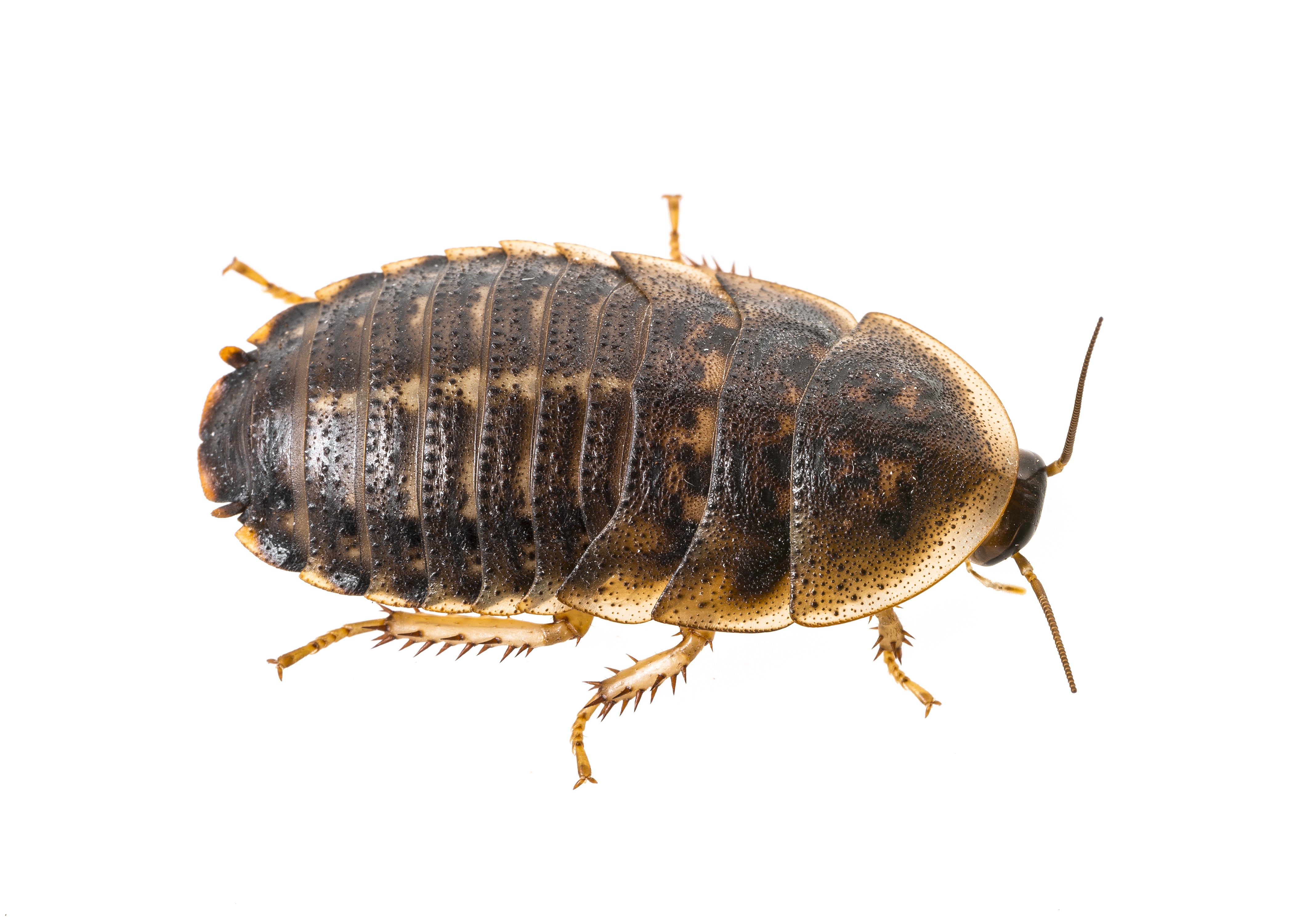Did you know that Dubia roaches are one of the most popular roach species used for feeding pets? If you have ever owned a reptile or similar animal, you likely know that Dubia roaches are always high on the list of foods that these pets should eat. But what exactly is so great about these fat roaches and what kind of nutrition can they offer your pet?
How can you know if these roaches are really a better option when compared to other types of insects? Keep reading and learn more about Dubia roach nutrition below as well as common roach facts.
What You Need to Know About Dubia Roaches
The scientific name of these roaches is Blaptica dubia and can live up to 2 years.
Dubia roaches occur in the wild, usually around Central America as well as South America. However, the roaches that you buy for pet food should be grown in captivity (no wild caught).
This makes it easier to grow large numbers of roaches at one time.
Growing Dubia roaches in captivity isn't difficult but does take time. is It also makes it easier to keep track of how many roaches there are, what they eat, how healthy they are, how large they are, and so on. Often times, roaches that are farmed are fed specific things to turn them into big fat roaches. The fatter the roaches are, the more nutrition they will provide to whatever animal you are going to feed them to. This is important for ensuring that your pet has all the right nutrition as well as calories from these roaches.
They look more or less like typical roaches. Their bodies are usually light brown and they may be colored with spots that are a slightly darker shade of brown. Their diet mainly consists of fruits and vegetables, although they may occasionally feed on different types of grain as well.
The Details
This diet naturally makes Dubia roaches rich in protein, vitamins, minerals, and even antioxidants. All of this nutrition, of course, makes the roaches ideal for feeding a wide variety of pets. Usually, these roaches are great food for various reptiles such as lizards, snakes, and so on, although they may sometimes be fed to other types of pets as well.
The gestation period for a Dubia roach is around 60 days. When this type of roach produces offspring, it usually produces around 30 baby cockroaches, also known as nymphs.
These roaches can produce a large number of offspring so quickly, it is very easy to farm them.
This is important because, after all, they are such a popular food source for many common pets. Usually, Dubia roach farmers will wait until the roaches are more mature and fat before selling them. As mentioned before, the larger and fatter the roaches are, the more nutrition they will provide. Sometimes, these roaches are sold live since live food is more appealing to pets like lizards.
However, these roaches may be sold dead as well. But what about the protein in a Dubia roach? How much protein is there in just one roach?
More importantly, what other nutrients do these roaches have to offer?
Dubia Roach Nutrition Facts
Dubia roaches are often compared to other insects such as crickets, grasshoppers, worms, and other small creatures. All of these insects are very popular options for food for animals such as lizards, turtles, and so on. After all, they all have unique types of nutrition to offer.
However, Dubia roaches are one of the most popular options because the nutrition they have to offer is so varied and occurs in such large concentrations. This is not to mention that it is very easy to keep even live Dubia roaches in check. When you release a live insect such as a cricket or grasshopper for your pet to eat, there is a chance that your pet won't eat it right away.
Instead, that insect will chirp and hop around and be an overall annoyance until your pet is finally hungry enough to eat it. In some cases, an insect like that can jump out of your pet's enclosure and you'll have to worry about catching it. However, when you get Dubia roaches, you'll find that they won't do much except scurry around a little bit and they shouldn't cause you any problems.
When you feed these roaches to your pet, you will provide your pet with around 800 mg of calcium. You may know that calcium is important for humans to develop strong bones, but calcium is also important to many pets for the same reason. This is not to mention that a steady supply of calcium is important to keep reptiles and other pets generally healthy.
What You Need to Know
The roaches also have a very large percentage of protein, much more than other feeders like grasshoppers or crickets. Protein is important for providing your pet with energy. Protein is also helpful for keeping your pet healthy overall.
These roaches even have more protein than some worms such as superworms, wax worms, and mealworms, all of which are famous for their nutrition. At the same time, these roaches, contain very little fat. This is important because too much fat can be bad for your pet.
As with humans, excessive fat can cause issues with digestion and metabolism and it certainly isn't good for a pet's overall health. However, fat in small quantities such as the quantities that Dubia roaches provide can ensure that your pet only ever receives a healthy dose of dietary fat. Another thing that you might not know is that these roaches are a great source of fiber.
While there are some feeders that may provide slightly more fiber such as wax worms, Dubia roaches generally have a high and healthy concentration of fiber to ensure that your pet digests its food properly. Feeding Dubia roaches to your pet is a sure way that your pet will have a healthy diet and a healthy body as a result.
But the benefits of Dubia roaches don't end there.
What Else Should You Know About Dubia Roaches?
The great thing about Dubia roaches is that they come in many different sizes. Very small roaches are usually those that are still quite young and haven't had a chance to eat too much or develop a larger body. Large and fat roaches, on the other hand, are far more mature and have been fed all sorts of nutrient-rich foods like fruits and vegetables.
You might be wondering why the size of the cockroach matters. The main reason is that you can better measure how many roaches you should feed your pet. For example, suppose you are raising a baby bearded dragon. A baby lizard won't be able to eat a fully-grown Dubia roach even if it is packed with protein and other nutrients.
Instead, you would have to feed the lizard several small Dubia roaches until the lizard starts to get bigger. Then, you can reduce the number of roaches that you feed your lizard since you will use larger roaches with more protein. This is the case with whatever pet you may have.
What to Know
Depending on the size and age of your pet, the size of the Dubia roaches matter. The last thing you want is to feed your pet something that is too large for them to swallow. If you do that, they may choke or they may have a hard time digesting the roach.
Besides the different sizes, you should also consider that Dubia roaches have the perfect balance of moisture and dry matter. If an insect consists of too much dry matter, it can be difficult for your pet to eat the insect. More than that, it is hard to digest the insect and break down the nutrients it has to offer.
But when an insect has a high level of moisture, like Dubia roaches, it will be far easier for your pet to eat the creature. This is not to mention that these roaches are filled with all sorts of minerals to keep your pet as healthy as possible.
The Importance of Fat Roaches for Your Pets
Fat roaches such as Dubia roaches are very important if you want to make sure that your pet has a steady stream of nutrition. Dubia roaches are packed with protein along with calcium and minerals.
To learn more about Dubia roaches for your pets, click here to see our selection.

